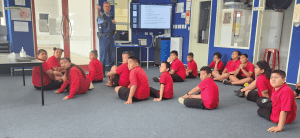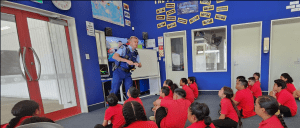Before our writing test, Room 9 and 10 had a challenge – to design couture attire using toilet paper in groups of 3-4 friends. We had 8 minutes to create this wearable art. The outcome was both hilarious and stressful.
Our class had a great time collaborating, using their creativity, communicating with each other, and critically evaluating their designer dresses. Check out our PENN

